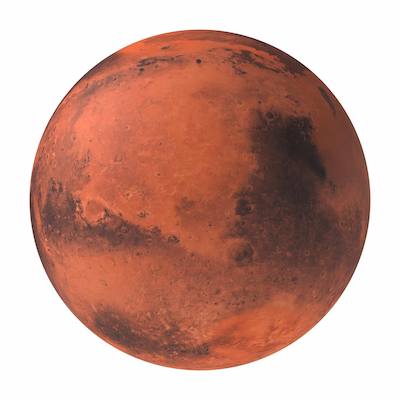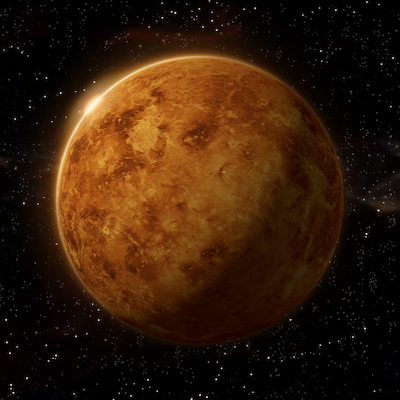
The terraforming of Mars is a topic that captures the interest of scientists, engineers, and space enthusiasts. The idea of transforming the Red Planet into a habitable environment for humans is both fascinating and challenging. With the growing exploration of space and advances in technology, the possibility of colonizing Mars becomes increasingly plausible. However, the question remains: is terraforming Mars a feasible reality or merely science fiction?
Various factors come into play when discussing Mars terraforming, including scientific, ethical, and technological aspects. Mars’ atmosphere is composed mostly of carbon dioxide, and its extreme temperatures and intense solar radiation make life as we know it nearly impossible. Despite the challenges, the search for innovative solutions and human curiosity may lead to significant breakthroughs. In this article, we will explore how the terraforming process works, the potential advantages of considering this possibility, and how we might actually transform the Red Planet.
How Does the Terraforming of Mars Work?
Terraforming Mars involves a series of complex and interconnected processes aimed at modifying the planet’s environmental conditions to make them more Earth-like. The first step in this process is modifying the Martian atmosphere. Currently, Mars’ atmosphere is very thin and mostly composed of carbon dioxide, with atmospheric pressure less than 1% of Earth’s. To make Mars habitable, it would be necessary to increase atmospheric pressure and add oxygen.
One approach to achieving this is by releasing greenhouse gases into Mars’ atmosphere. This could be done through automated factories that produce gases like methane and ammonia, which have the potential to warm the planet. Warming the Martian surface could melt the polar ice caps, releasing water and water vapor, contributing to the formation of a denser, oxygen-rich atmosphere.
In addition to modifying the atmosphere, another crucial aspect of Mars terraforming is the introduction of liquid water. Mars contains vast reserves of frozen water in its polar caps and underground. Releasing this water, along with increasing temperatures, could allow for the formation of oceans and lakes, creating an environment suitable for life. The presence of water is not only essential for sustaining organisms but also for establishing a hydrological cycle that would support a more stable climate.
Lastly, introducing living organisms, such as plants and microorganisms, would be essential to the terraforming process. These organisms could be genetically modified to adapt to the planet’s extreme conditions. Plants, for example, could help convert carbon dioxide into oxygen, gradually making the atmosphere more breathable. The interaction between atmospheric, hydrological, and biological processes is vital for creating a sustainable environment on Mars.

Advantages of Considering Terraforming Mars: Feasible or Science Fiction?
Terraforming Mars presents several advantages that justify exploring the idea. One of the main benefits is the expansion of human frontiers. With Earth’s growing population and environmental challenges, colonizing Mars could offer a new home for humanity. This would not only relieve pressure on Earth’s resources but also ensure the survival of our species in the event of global catastrophes.
Another advantage is the potential for scientific and technological breakthroughs. Studying the processes involved in terraforming Mars would require innovations in fields such as engineering, biotechnology, and environmental science. These advancements could have applications on Earth, helping to solve problems like water scarcity, pollution, and climate change. Additionally, exploring Mars could provide new insights into the origin of life and the potential for life on other planets, enriching our understanding of the universe.
Terraforming Mars could also foster international collaboration. The ambition to turn Mars into a habitable environment would require joint efforts from various countries and organizations. Such collaboration could promote peace and unity among nations, as well as encourage the sharing of knowledge and resources. Pursuing a common goal like Mars colonization could unite humanity around a grand project.
Finally, terraforming Mars could inspire future generations. The idea of transforming an inhospitable planet into a human home is a powerful narrative that can motivate young scientists and engineers to dedicate themselves to space exploration and scientific research. This inspiration is key to developing a culture that values science and innovation, paving the way for a more promising future.
How to Terraform Mars?
Terraforming Mars is a colossal endeavor that involves several stages and innovative technologies. Below are some of the main strategies that could be employed in this process:
-
Raising the temperature: To make Mars habitable, it is essential to increase its average temperature. This could be done by building orbital mirrors to reflect sunlight onto the surface or by releasing greenhouse gases to trap heat.
-
Releasing water: Water is a vital component for life. To release frozen water in the polar caps, those regions would need to be heated, allowing water to flow in liquid form and create lakes and oceans.
-
Creating a dense atmosphere: Introducing gases such as methane and ammonia would help increase atmospheric pressure and air density. This could be done through industrial processes that generate these gases on Mars.
-
Introducing life: Genetically modified organisms, such as plants and microorganisms, could be sent to Mars to start producing oxygen and forming fertile soil. These organisms would need to be adapted to Mars’ extreme conditions.
-
Establishing colonies: Before fully terraforming Mars, human colonies would need to be established. These colonies would serve as laboratories to test terraforming technologies and the viability of life on the planet.
-
Monitoring and adjustments: The process of terraforming Mars would require constant monitoring and adjustments in strategy. Collecting data on environmental conditions and how introduced organisms respond would be essential to ensure success.
After implementing these strategies, the terraforming of Mars would be gradual and could take hundreds or even thousands of years. However, each small step toward creating a habitable environment could open new possibilities for the exploration and colonization of the Red Planet.

Did You Enjoy Learning About Terraforming Mars: Feasible or Science Fiction?
Terraforming Mars is an intriguing topic that blends science, technology, and imagination. With continuous advances in space exploration, the possibility of transforming the Red Planet into a new home for humanity becomes more real. The pursuit of innovative solutions and international collaboration could lead to amazing discoveries.
We hope this article has sparked your interest in the terraforming of Mars and its implications. Space exploration is an exciting and challenging journey, and terraforming Mars may be one of the next great steps in humanity’s quest for new horizons. Stay tuned for future developments and continue exploring this fascinating field of science!
Frequently Asked Questions
What is terraforming?
Terraforming is transforming a planet to make it more like Earth. This includes creating an atmosphere and water.
Terraforming Mars: feasible or science fiction?
Terraforming Mars still seems like science fiction. We have ideas, but we lack the technology and knowledge.
What methods exist to terraform Mars?
There are many ideas, like warming Mars, creating plants, and releasing gases. However, we don’t know if they would work.
What are the main challenges of terraforming Mars?
The biggest challenges are the lack of water, intense radiation, and low temperatures. These are very difficult to overcome.
When will we see a terraformed Mars?
We don’t know yet. It could take hundreds or even thousands of years. It’s a dream that may take a long time to become reality.
Is it possible to breathe on Mars without a spacesuit?
No, it is not. Mars has a very thin atmosphere made mostly of carbon dioxide, with almost no oxygen. Without a spacesuit, humans would not be able to survive.
Could plants grow on Mars?
Possibly, but with help. Plants would need protection from radiation, extreme cold, and low air pressure. Scientists are studying how to grow plants in controlled environments like greenhouses on Mars.
Would humans be able to live on Mars permanently?
Not yet. Long-term human life on Mars would require advanced technology to provide oxygen, food, water, and protection from radiation. Permanent living might be possible in the future, but we’re not there yet.

